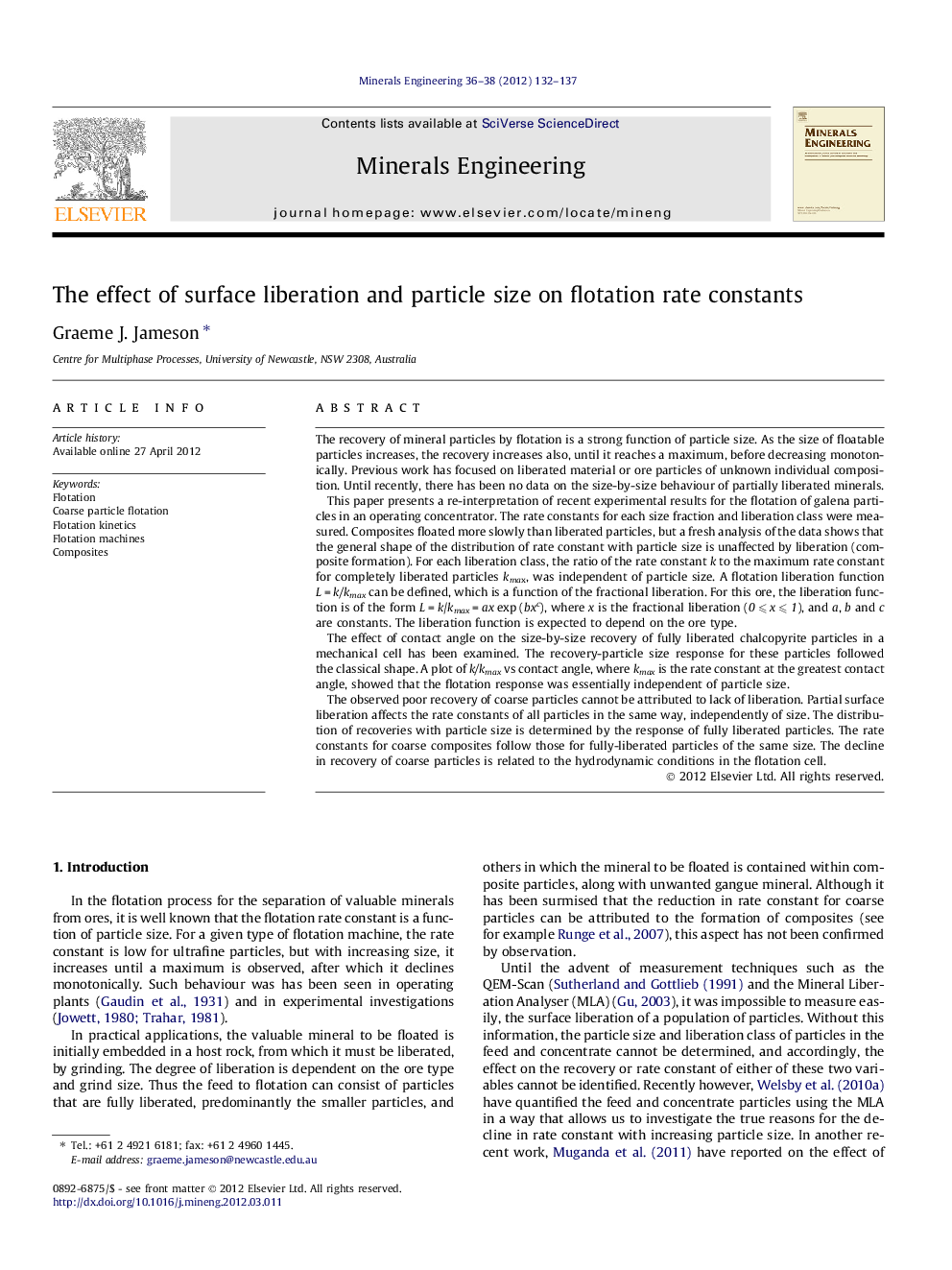| کد مقاله | کد نشریه | سال انتشار | مقاله انگلیسی | نسخه تمام متن |
|---|---|---|---|---|
| 233529 | 465350 | 2012 | 6 صفحه PDF | دانلود رایگان |

The recovery of mineral particles by flotation is a strong function of particle size. As the size of floatable particles increases, the recovery increases also, until it reaches a maximum, before decreasing monotonically. Previous work has focused on liberated material or ore particles of unknown individual composition. Until recently, there has been no data on the size-by-size behaviour of partially liberated minerals.This paper presents a re-interpretation of recent experimental results for the flotation of galena particles in an operating concentrator. The rate constants for each size fraction and liberation class were measured. Composites floated more slowly than liberated particles, but a fresh analysis of the data shows that the general shape of the distribution of rate constant with particle size is unaffected by liberation (composite formation). For each liberation class, the ratio of the rate constant k to the maximum rate constant for completely liberated particles kmax, was independent of particle size. A flotation liberation function L = k/kmax can be defined, which is a function of the fractional liberation. For this ore, the liberation function is of the form L = k/kmax = ax exp (bxc), where x is the fractional liberation (0 ⩽ x ⩽ 1), and a, b and c are constants. The liberation function is expected to depend on the ore type.The effect of contact angle on the size-by-size recovery of fully liberated chalcopyrite particles in a mechanical cell has been examined. The recovery-particle size response for these particles followed the classical shape. A plot of k/kmax vs contact angle, where kmax is the rate constant at the greatest contact angle, showed that the flotation response was essentially independent of particle size.The observed poor recovery of coarse particles cannot be attributed to lack of liberation. Partial surface liberation affects the rate constants of all particles in the same way, independently of size. The distribution of recoveries with particle size is determined by the response of fully liberated particles. The rate constants for coarse composites follow those for fully-liberated particles of the same size. The decline in recovery of coarse particles is related to the hydrodynamic conditions in the flotation cell.
Figure optionsDownload as PowerPoint slideHighlights
► Rate data for flotation of fully liberated and composite galena particles has been re-interpreted.
► Rate constants of all particles show similar behaviour with respect to particle size.
► For a given fractional liberation, reduced rate constant k/kmax is independent of particle size.
► A liberation function is defined, which is a function of the fractional liberation.
► The form of the k–dp relation depends on machine hydrodynamics.
Journal: Minerals Engineering - Volumes 36–38, October 2012, Pages 132–137